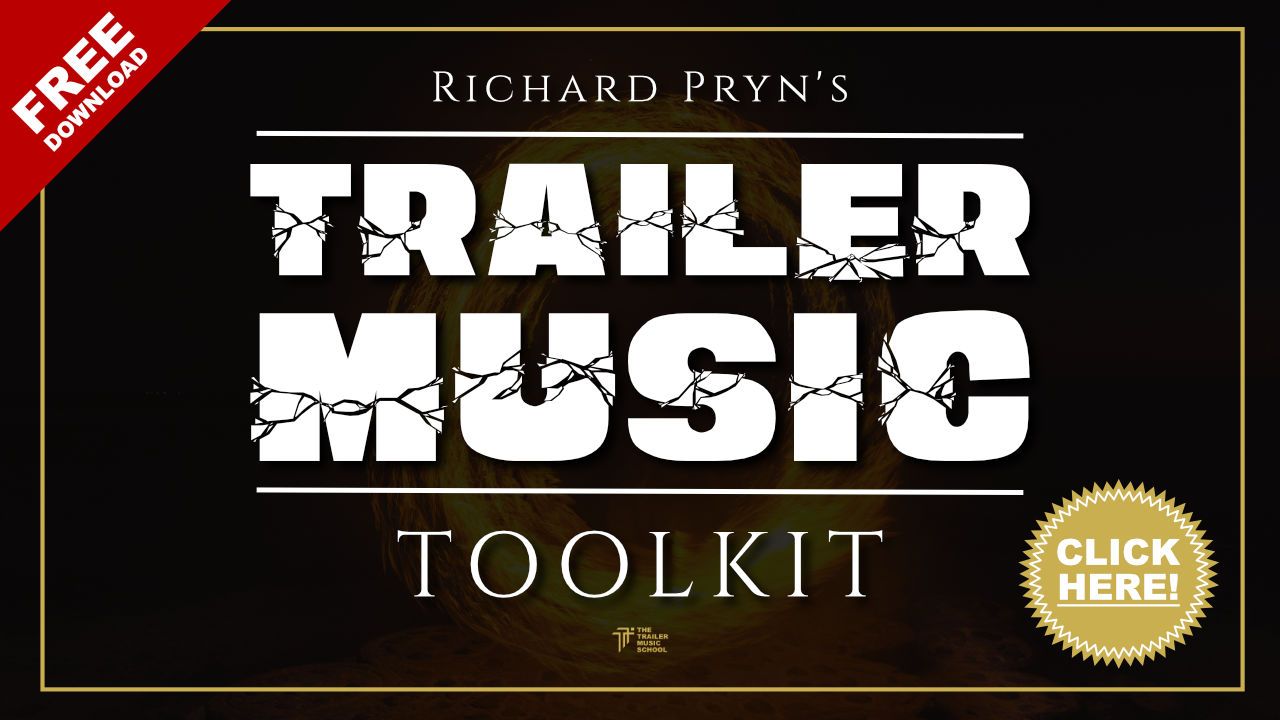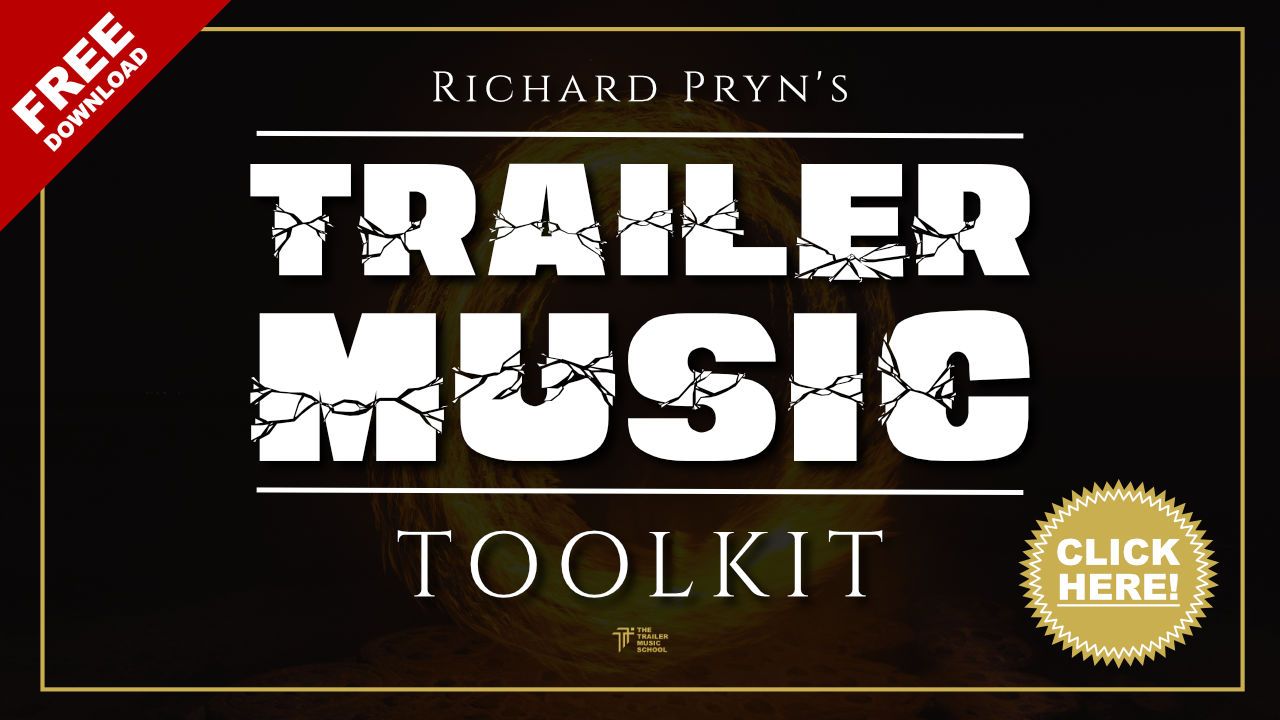I will show you the 7 rules I follow when creating the first Act 1 for a piece of trailer music. Following these rules has meant that I have successfully had my music featured in over 100 movie trailers.
By the end of this, you will be able to create effective Act 1s that grab the listener’s attention and make them want to hear your whole track.
Don’t worry, there aren't any crazy difficult skills to needed to follow these rules. Anyone can follow them with ease.
If you don't know what I am talking about when I say Act 1 then you should read my guide to Trailer Music Structure first.
Start Smaller than You Think
This is one of the most common mistakes made by aspiring trailer music composers.
The mistake is to think that because we are making huge trailer music, every track needs to start with a colossal bang and loads of musical elements.
The most effective approach is to start much smaller than you think.
This doesn't just mean starting quieter, it also means starting with a lot less musical material going on.
This could be just a drone or a ping drenched in reverb.
Think of Landscapes
One of my favourite tools for creating great-sounding first Acts is to imagine a landscape.
With the landscape as my starting point, I then start to create a soundscape that reflects that image.
I imagine that pads and drones are my washes that create the sky and distant lands, sub-booms and subtle hits are distant explosions or mountains, whilst pings and closer sounding things start to give those other elements some context, like trees or buildings.
Approaching Act 1 in this way means that I generally try to use only 3 or 4 elements to create the main bed of the first Act.
Everything else from this point on serves to build on that.
Create Atmosphere
This is the most important part of Act 1; to create the right atmosphere or mood for the trailer.
That is Act 1's role - setting the scene.
If you can create the right mood with your music then the rest will fall into place a lot more easily.
The easiest way to do this is by using reverbs to create a sense of physical space (still thinking in terms of landscapes).
This physical space takes the listener out of their seat and into the music.
The reverb you use does indeed depend on the space and mood that you are trying to set.
My rule of thumb, however, is that you can get away with using really long and full sounding reverbs in Act 1 as there aren't many other "competing" musical elements - there is a lot of space to play with.
Imply Distance
Bass frequencies travel further than higher frequencies because they are absorbed less rapidly.
What this means is that if something huge, like an explosion, happened miles away you would hear a lot more of the low-end frequencies.
Compared to an explosion a few hundred meters away where you would hear the full spectrum noise; low and high frequencies.
This means that if you want to make it seem like something huge is happening in the distance then you would use trailer hits that contain mostly subfrequencies.
To the listener, this immediately creates a sense of distance.
It is one of the easiest ways to create distance (outside of long reverbs) that we as composers have - sub-booms with long tails.

Grab their attention
Act 1 is not all about things happening in the distance. You also need to bring musical elements up close.
Not only does this reinforce the distance created by your beds and booms, but it also grabs the listener's attention and this is hugely important.
When prospective client listens to tracks, they will skim. But the part of the track that they will almost always listen to is Act 1.
So you need to grab their attention.
This doesn't mean that you should always throw pings into your track.
Instead, it could mean that you use a signature sound here.
Something that gives your track character and also makes the client want to listen more.
Build the tension
So much of our job as Trailer Music composers is to create tension.
Will the story resolve or will it all go horribly wrong?
Obviously, it will all end fine (except for the movie Se7en of course) but in the trailer, we are aiming to not let the tension resolve fully.
In fact, we want to keep building the tension as much as possible, even in Act 1.
My track Rikasha has been used on many trailers in Act 1 alone because it builds the tension so well.
The easiest way for us to build tension in Act 1 without throwing too much stuff in too soon is to use risers and volume automation.
Both risers and automation give the sense of expanding, growing, and layering. Not always out-and-out horror-like tension.
Just a sense that something is building.
Something is going to happen, and soon.
Hold Back
This is quite similar to the idea of less is more, my first rule - start smaller than you think.
This rule however refers to the musical material; chords and melodies.
I like to think of Act 1 as the teaser for Acts 2 and 3.
You don't want to show your full melody or full chord progression in all its glory just yet but you do want to let the listener know what is coming.
You are giving them a sneak peek of what is to come.
This teaser of the live-action Beauty and the Beast movie does this so well.
In fact, this trailer is pretty much a masterclass in writing great first Acts. Start small, think of landscapes, create atmosphere, imply distance, grab their attention, build the tension, and hold back.

Get my FREE Trailer Music Toolkit
It contains all the One-shots you need to sketch a complete track, and the hugely popular Perfect Trailer Music Cue Blueprint PDF.






